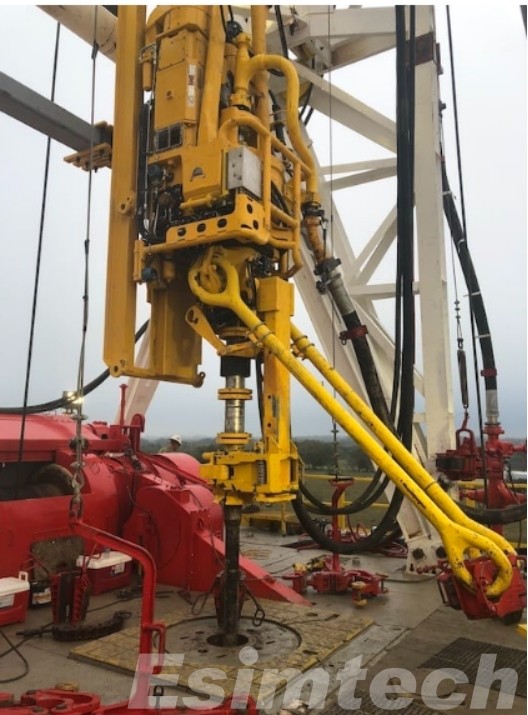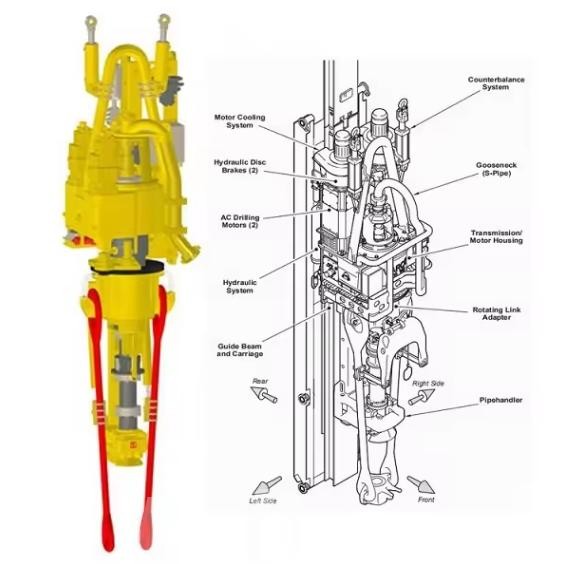The Impact of Top Drive Drilling: How This Technology Changed the Drilling Landscape
The quest for oil and gas has always pushed the boundaries of drilling technology. In this pursuit, the emergence of top drive drilling stands as a watershed moment, revolutionizing the efficiency and capabilities of the entire industry. Let’s delve into the rise of top drives, explore how they transformed the drilling landscape, and peek into the future with advancements in simulation technology.
The Rise of Top Drive Drilling

The quest for oil and gas has always been a relentless race against ever-dwindling resources and increasingly challenging geological formations. Traditional drilling methods, while instrumental in early exploration efforts, began to show their limitations as the industry ventured deeper and further. Rotary tables, the workhorses of yesteryear, relied on a cumbersome system of raising and lowering the entire drill string for each pipe connection. This resulted in several drawbacks:
- Limited Drilling Depth: Each connection stop meant halting drilling progress and introducing inefficiencies. The depth achievable with traditional methods was restricted by the length of individual drill pipes.
- Time-Consuming Connections: The process of adding new pipe sections was slow and labor-intensive, significantly impacting overall drilling times. This not only drove up operational costs but also extended project timelines.
- Difficulties with Directional Drilling: Precise control over the drill string’s trajectory was a challenge with traditional methods. This limited the ability to navigate complex geological formations or drill at angles for optimal resource extraction.
The need for a more efficient and versatile drilling solution became increasingly evident. Enter top drive drilling, a technological innovation that would forever change the landscape of the industry. Developed in the late 20th century, top drive drilling introduced a new paradigm for well construction. This revolutionary technology replaced the rotary table with a powerful motor positioned at the top of the drilling rig. This seemingly simple change – a giant rotary swivel directly applying torque to the drill pipe – ushered in an era of unprecedented drilling efficiency and capability.

How Top Drive Drilling Transforming the Drilling Landscape
The arrival of top drive drilling on the scene wasn’t just a technological upgrade; it was a paradigm shift for the entire oil and gas drilling industry. Here’s a deeper dive into how top drives revolutionized drilling on multiple fronts:
1. Unleashing the Potential for Deeper Reaches: Traditional methods limited drilling depth due to the need to constantly stop and add new sections of drill pipe (connections). Top drives break this barrier. By continuously rotating the drill string while simultaneously feeding new pipe downhole, they eliminate the need for these breaks. This continuous rotation allows for reaching previously unimaginable depths, opening up access to new oil and gas reserves trapped in far deeper formations.
2. Speeding Up the Drilling Race: Time is money, especially in the drilling industry. Top drives significantly cut down on drilling times through two key features:
- Faster Connections: Making connections between drill pipe sections used to be a time-consuming process involving manual manipulation. Top drives eliminate this by allowing for the addition of new pipe sections while the drill string continues to rotate. This drastically reduces downtime associated with connections.
- Improved Hole Cleaning: Maintaining a clean wellbore is crucial for efficient drilling. Top drives enhance hole cleaning by allowing for a constant flow of drilling fluids while the drill bit is actively working. This removes cuttings and debris more effectively, preventing them from accumulating and hindering progress.
3. Conquering the Challenge of Directional Drilling: Not all oil and gas deposits lie neatly beneath our feet. Many are located in complex geological formations requiring directional drilling techniques. Top drives excel in such scenarios. Their precise control over the drill string allows for intricate maneuvering and precise wellbore trajectories. This capability unlocks reserves that would be inaccessible with traditional methods, maximizing resource extraction from a single wellbore.
4. Prioritizing Safety on the Rig: Safety is paramount in the drilling industry. Top drives contribute to a safer work environment by mitigating the risk of stuck pipe incidents. Traditional methods often involved stopping rotation while pulling out the drill string, which could lead to the pipe getting lodged in the wellbore. Top drives eliminate this risk by allowing for simultaneous rotation and circulation of drilling fluids during wellbore exits. This continuous movement helps prevent the pipe from getting stuck, minimizing the potential for accidents and injuries.
The impact of top drive drilling extends far beyond these core benefits. It has led to a domino effect of advancements in drilling technology, pushing the boundaries of what’s possible. From the development of more robust and efficient drill pipe to the creation of specialized drilling fluids optimized for top drive operations, this innovation has spurred continuous progress in the industry.
Top Drive Drilling Simulation Technology

The impact of top drive drilling extends beyond revolutionizing drilling practices. Top Drive Drilling Simulation Technology has emerged as a game changer for training drillers, offering a multitude of benefits:
- Enhanced Training Efficiency: Traditional training methods relied heavily on classroom instruction and limited hands-on experience with real equipment. Simulators provide a safe and cost-effective alternative, allowing trainees to experience a wide range of drilling scenarios in a controlled environment. This condenses training time while maximizing learning outcomes.
- Realistic Training Scenarios: Advanced simulators accurately replicate real-world drilling rigs, complete with realistic controls, visual displays, and even haptic feedback that mimics the feel of operating the machinery. This immersive experience allows trainees to practice handling complex well conditions, emergency procedures, and equipment malfunctions in a safe, controlled environment.
- Improved Skill Development: Simulation training goes beyond basic operation. Trainees can hone critical skills like mud circulation control, wellbore positioning, and decision-making under pressure. These skills are essential for ensuring efficient and safe drilling operations.
- Reduced Risk and Costs: Real-world drilling mistakes can be costly and even dangerous. Simulators eliminate the risk of damaging equipment or causing injuries during training. Additionally, the ability to practice various scenarios translates to fewer errors on the job, further reducing operational risks and associated costs.
- Data-Driven Learning: Modern simulators are equipped with sophisticated data tracking capabilities. This allows instructors to monitor trainee performance, identify areas needing improvement, and personalize training modules to address individual strengths and weaknesses. This data-driven approach fosters targeted learning and ensures trainees are well-equipped for real-world challenges.
The integration of top drive drilling simulation technology represents a significant leap forward in training drillers. It fosters a skilled and competent workforce, ultimately contributing to a safer, more efficient, and productive drilling industry.
Conclusion
Top drive drilling stands as a testament to human ingenuity. It has revolutionized the drilling industry, enabling efficient exploration and resource extraction. With ongoing advancements in simulation technology, the future of top drive drilling looks even brighter, ensuring continued safety, efficiency, and success in reaching the world’s valuable resources.
